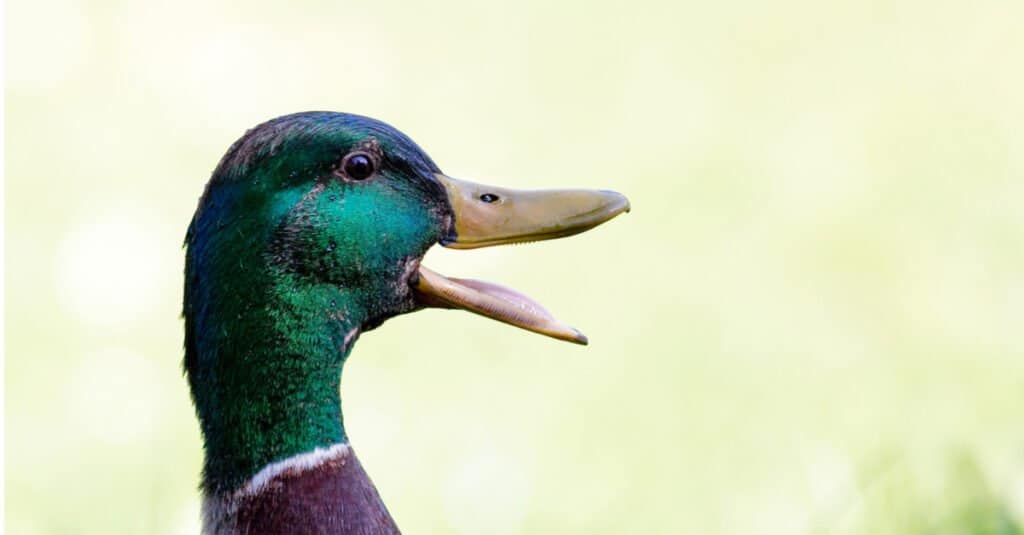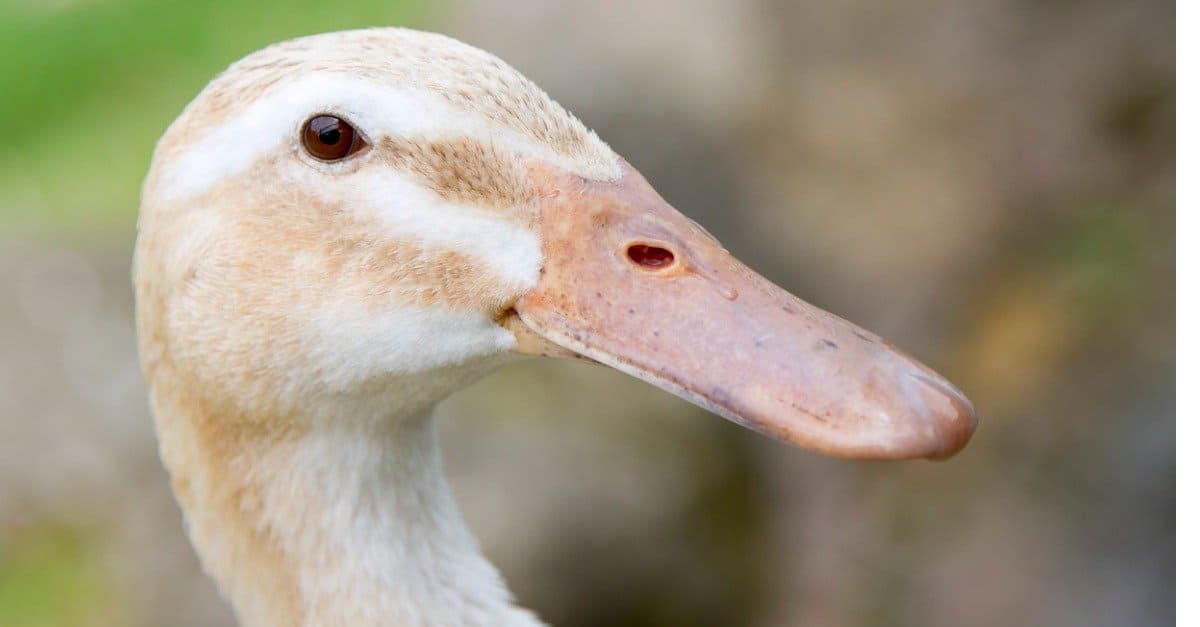Ducks are short-necked members of the Anatidae family. They’re smaller than geese and swans, but distinct from other aquatic birds like loons, grebes, and coots. They live all over the world, in both fresh and salt water, and have a tendency to quack. When they’re not quacking, or waddling around on dry land, they’re foraging for foods like aquatic plants, seeds, and insects. But, the big question is; do ducks have teeth?
Here, we’ll explore the inside of the duck’s mouth, and learn more about their bills and what they use them for. Then, we’ll go into the duck’s belly to check out their gizzard, and find out just why ducks eat rocks. We’ll go over whether or not ducks bite, and how to keep your pet duck happy and healthy. Finally, we’ll look back into history, at the duck ‘teeth’ of the ancient, terrifying relative of the modern duck that stood eight feet tall.
Do Ducks Have Teeth?
Many people have seen what look like duck teeth lining the edges of duck bills and mistaken them for teeth. In fact, like all birds, ducks have no teeth. Instead, they have hard, semi-flexible structures called lamellae around the outer edges of their beaks.
These lamellae serve a couple of different functions. First; they act as comb-like filters when the duck is feeding. Like baleen whales, they’re used to sift water from plant material when the duck grasps underwater vegetation. The duck pulls the vegetation into its mouth, and the lamellae keep the water and muck from coming in as well.
Ducks also use their lamellae for grooming. If you’ve ever spent any amount of time watching ducks, you’ve probably seen them clean their feathers. They do this by running their bills over their feathers, preening them with the small lamellae as they go. The lamellae are excellent tools for cleaning feathers without damaging them. They’re small, flexible, and act together as an effective comb.

Ducks do not have teeth; instead, they have comb-like lamillae
©Martin Good/Shutterstock.com
Duck Bills
Without bills, ducks would have no lamellae, and no way to eat. Duck bills are made of hardened keratin–the same thing human nails and hair are made of. The bill is encased in skin, and the skin continually produces soft keratin. Over time, this keratin hardens, and keeps the bill shiny and hard.
Dabbling vs. Diving Duck Bills
True ducks are organized into two classes; diving and dabbling ducks. Diving ducks do what you imagine they would do–dive. When you see a duck in the water with its tail feathers high to the sky and its head below water, it’s diving for food. Diving ducks have sharper bills, and sharper lamellae. Depending on the species of duck, and what their diet primarily includes, the lamellae may be coarse or fine. Studies show that, the larger the preferred food, the coarser the lamellae.
Dabbling ducks are those that mainly scoop food up off the ground to eat. They tend to have wider, flatter bills than diving ducks. Like diving ducks, they too have lamellae lining their beaks.
How Do Ducks Chew?

As close relatives of ducks, you can clearly see the lamellae that serve as “teeth” on a goose.
©Zoltan Major/Shutterstock.com
Ducks, like all extant species of bird, don’t chew their food; they swallow it whole. Because they don’t chew their food, they have no need for teeth. But, that begs the question; just how do ducks break up their food for digestion?
Well, they start by eating rocks. The rocks go directly to the duck’s gizzard, which is where their food goes before it goes to the stomach. In the gizzard, the food rolls around with the rocks like the inside of a washing machine. As it does, the rocks break up the food until it’s ready to be digested. So, instead of teeth, ducks have gizzard rocks.
Can Ducks Bite?
Like all animals, ducks are capable of biting. However, ducks are non-aggressive, and would much rather run away from a human than bite them. If left with no other choice, a duck will bite, but its lack of teeth and small size means that the bite will likely be no more than a pinch. At worst, it may bruise the bite victim’s skin.
Keeping Duck ‘Teeth’ Healthy
Many people keep flocks of ducks as pets or farmyard animals. Their eggs, meat, and feathers are used all over the world. But keeping a duck isn’t as simple as putting food and water out for it. Ducks need a constant, clean source of water. This often includes a pond, or large source of regularly cleaned water. To keep their beaks and lamellae healthy, it’s important that they be fed an appropriate diet including vegetation, insects, and seeds–though each breed has a specific diet that should be maintained.
The Ancient Demon Duck Of Doom
Ducks come from a large family of fowl, and some of their ancient relations stood taller than a large man, and weighed over 500 pounds. Known from fossils discovered in Australia, the so named ‘demon duck of doom’ (Dromornis planei) was a very large, robust, flightless bird that stood as tall as an ostrich, but weighed much more.
Demon ducks had very large bills. In fact, their heads were enormous by bird standards, some had heads the size of a small horse’s head. With such large beaks, you may be wondering; what did they eat, and did they have teeth?
Despite the fearsome beaks, scientists believe these large ducks actually had diets that consisted almost entirely of plants. They’ve discovered gastroliths (gizzard stones) among the fossils of these mega-birds, which means they likely ate in a lot of the same ways that today’s ducks eat.
Though lamellae haven’t been preserved with the fossils, it’s likely that Dromornis had some kind of filter system, like lamellae. So, although they didn’t have teeth, they probably had the duck’s version of teeth–the baleen-like, bill lining lamellae still seen on modern ducks.
Up Next
Thank you for reading! Have some feedback for us? Contact the AZ Animals editorial team.








